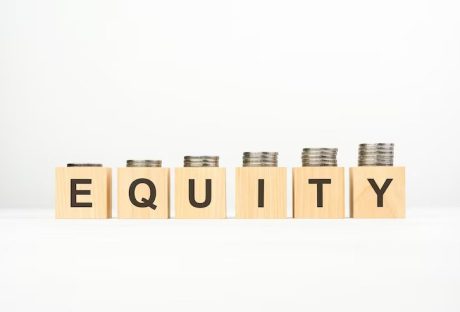Staking cryptocurrency is a growing trend since it allows individuals to generate passive income from their existing cryptocurrency holdings.
Making money in the crypto space can be done in several ways. You can join in DeFi and stake your cryptocurrencies, acquire and keep coins with the expectation of price appreciation, or trade on price speculation via crypto CFDs.
In this post, we will define staking and walk you through the steps necessary to begin staking your own coins.
What Is Crypto Staking? How Does Staking In Crypto Work?
By “locking up” assets to maintain the integrity of a cryptocurrency network, “staking” allows users to receive a passive income from their cryptocurrency holdings without ever having to sell their coins. Investing in cryptocurrency through staking is equivalent to putting money into a high-interest savings account.
Staking allows cryptocurrency networks to obtain consensus on the status of transactions via a proof of stake mechanism, with the tokens themselves acting as a kind of internal security rather than the computer power and electricity consumed by the network.
This is demonstrated by the success of proof-of-stake cryptocurrencies like Cardano, Solana, and Polkadot in the cryptocurrency market. These networks are able to process a high volume of transactions with low transaction fees because of the various staking mechanisms they employ.
Blockchain infrastructures benefit from this because they become more adaptable, affordable to users, and eco-friendly. Besides improving cryptocurrency’s safety, scalability, and efficiency, staking lets its owners make passive revenue.
To maximize their returns, many long-term holders are taking advantage of staking rewards. Staking, however, has some negatives, such as a reduced ability to sell assets swiftly in the event of a market downturn.
The network chooses validators according to the number and age of tokens they have staked. Staking more tokens for a longer period of time increases the likelihood of getting chosen as a validator.
Users that have a lesser portion of tokens have a decreased likelihood of contributing to the network’s security and earning incentives as a result of their participation. Because of this, users with a lower stake make use of staking pools so that they can take part in the network.
Staking Pool Definition
To increase their chances of being chosen to validate blocks and receive block rewards, cryptocurrency network users can form staking pools by pooling their funds with other users.
Those who have stakes in the pool receive a proportional share of the block reward based on the sum of stakes they own. Staking pools, therefore, often result in lower payouts than individual staking. In contrast to the reliable and predictable payouts from staking pools, solo staking involves a significant investment in the crypto network.
Operators of staking pools, typically cryptocurrency exchanges, are in charge of maintaining the network’s validator nodes. Participants in the pool are obligated to store their funds at a predetermined public blockchain address. The pool has a nominal price for this convenience.
Other options enable users to stake money from their wallets directly into pools. Cold staking is one method that allows users to participate in pools while still using their hardware wallet.
Users who don’t feel comfortable managing and running their own node but still want to contribute to the security of the cryptocurrency network can do so through staking pools.
Why Is Staking Limited To Some Cryptocurrencies?
Whether or not a cryptocurrency network supports staking depends on the consensus process used.
Many cryptocurrencies, including Bitcoin and Litecoin, are not stackable because of the consensus method they employ. The double-spending issue that plagued early attempts with digital currency is resolved by crypto networks thanks to their consensus processes.
These consensus procedures are resilient in the face of opposition because of the careful economics they employ. The economics of the first cryptocurrency networks relied on mining, the mechanism through which nodes competed to solve cryptographic challenges with computational power.
Tokens and transaction fees are awarded to the node that verifies the right set of transactions and solves the cryptographic issue first. Bitcoin mining has come under fire due to concerns over its impact on the world’s energy supply.
Later, in 2012, Peercoin’s developer presented the notion of staking as a solution to the problems with the proof of work consensus mechanism. By risking their tokens, nodes demonstrate their support for the right set of transactions without having to solve complicated cryptographic challenges. Staking is only possible in cryptocurrencies because only they use this particular consensus methodology.
However, in order to attain consensus, several cryptocurrencies use a hybrid approach, combining proof of stake with proof of work. Bitcoin and Litecoin are examples of very straightforward cryptocurrency networks that can function adequately using proof of work.
Moreover, proof of work is notoriously time-consuming and expensive, making it unsuitable for use in cryptocurrency networks like Ethereum.
How Are Crypto Staking Rewards Calculated?
Crypto staking calculators are utilized to determine the value of staking incentives. These calculators provide you with an estimate of the amount of interest you will get after the investment period has passed.
Calculators work with the number of tokens invested, the annual percentage yield, and the length of time the tokens are held. Be sure to do the math on the potential winnings from your bets before you place them so that you can pick the solution that works best with your goals.
What Are The Benefits Of Crypto Staking?
As is the case with all different kinds of investments, there are potential downsides as well as potential upsides. Find out more about the benefits of staking cryptocurrency below:
- It validates financial transactions with a little amount of energy consumption.
- A cryptocurrency network can have its own internal security without having to rely on third-party hardware.
- Provides customers with the ability to generate passive income from their cryptocurrency holdings.
- It contributes to increasing the scalability of cryptocurrency networks.
- Provides an incentive for users to contribute to the safety of blockchains by reducing the required investment in their tokens.
Is Staking Crypto Safe?
There is some risk involved in staking, despite the fact that it is a revolutionary and relatively simple technique to generate passive income from your crypto holdings. Before staking their coins, investors need to be aware of certain risks, including the following:
Low Liquidity
When staking cryptocurrencies with a lesser market cap than Bitcoin or Ethereum, users frequently run the danger of being unable to sell their tokens once the staking time has ended. Choose a cryptocurrency that has a high level of liquid market activity and one that supports staking in order to reduce the impact of this risk.
Lockup Periods
Users will not be able to access their tokens while they are participating in the staking process since several staking protocols have lockup periods. You will not be able to sell the staked token in order to reduce your losses in the event of a personal financial crisis or if there is a significant reduction in the value of the staked token.
Alternatively, you may have to pay a high price to get at your tokens, reducing the number of tokens you have staked. Staking tokens without lockup periods is one way to deal with this.
Validator Limitation
In order to enhance their likelihood of successfully validating blocks, certain protocols mandate that validators keep their nodes online and operational at all times. In addition, validators need to exercise extreme caution whenever they operate a node.
If validators make a mistake and include invalid transactions by accident or if they default by going offline, they run the risk of having their staked tokens wiped out, which could include the tokens of individuals who are associated with that node.
Protect yourself from this by either becoming a validator by learning how to host a node or by staking your tokens with a trusted staking pool.
Conclusion
If you have cryptocurrency that you may stake and you do not have any immediate plans to trade it, then you should consider staking it. You won’t have to put in any effort at all, but your cryptocurrency holdings will grow as a result.
What happens if you don’t currently possess any cryptocurrency that you can stake? Researching cryptocurrencies that support staking is something you should do because of the potential returns.
There are many platforms that provide this service; nonetheless, it is important to determine whether or not each cryptocurrency represents a sound financial investment. You should only buy a cryptocurrency with the intention of staking it if you are also convinced that it is a suitable long-term investment.
The proof-of-stake system has proved useful, not just for cryptocurrencies but also for investors in crypto assets. Proof of stake is a method that can be utilized by cryptocurrencies to facilitate the processing of a high volume of transactions with a low associated cost.
Since you now have a better understanding of staking, you can begin looking into cryptocurrencies that have this feature.
Read Also:























